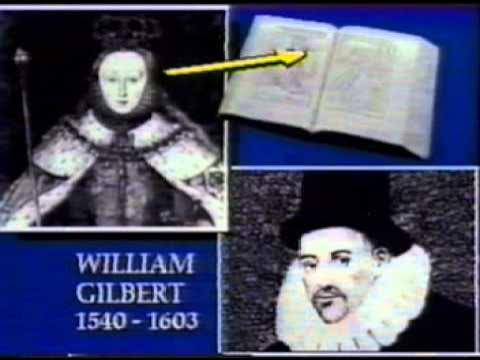Perkembangan Teori Atom | Model Atom Demokritus Dalton Thomson Rutherford Bohr Mekanika Kuantum
Summary
TLDRThis video outlines the evolution of atomic theory, beginning with Democritus's ancient concept of the atom as the smallest, indivisible particle. It traces key developments, including Dalton's postulates on atoms and their interactions, Thomson's discovery of the electron, Rutherford's nuclear model, and Bohr's introduction of electron orbits. The video then explores quantum mechanics, with contributions from de Broglie, Schrödinger, and Heisenberg, who presented the idea of electrons as both particles and waves, culminating in the modern quantum model of the atom. This theory portrays electron locations as probabilities within 'orbitals' rather than fixed orbits.
Takeaways
- 😀 The concept of the atom was first proposed by the Greek philosopher Democritus in the 4th century BCE, meaning it is the smallest indivisible part of matter.
- 😀 The word 'atom' is derived from the Greek word 'atomos,' where 'a' means 'not' and 'thomos' means 'to cut,' implying that it cannot be divided further.
- 😀 John Dalton's postulate in the 19th century supported Democritus's idea that atoms are indivisible and the smallest units of matter, like solid spheres.
- 😀 Dalton also proposed that atoms of the same element are identical in mass and properties, while atoms of different elements are different.
- 😀 Atoms can combine in simple, whole-number ratios to form molecules, and chemical reactions involve the rearrangement of atoms.
- 😀 The discovery of the electron by J.J. Thomson in 1897 led to the understanding that atoms contain both positive and negative charges.
- 😀 Around 1911, Ernest Rutherford's gold foil experiment revealed that atoms have a dense, positively charged nucleus, which led to the development of the nuclear model of the atom.
- 😀 Rutherford's model showed that atoms are mostly empty space, with a small, dense nucleus at the center and electrons surrounding it.
- 😀 In 1913, Niels Bohr enhanced the atomic model by introducing stable electron orbits around the nucleus, based on quantum theory.
- 😀 The modern quantum mechanical model, developed by Louis de Broglie, Erwin Schrödinger, and Werner Heisenberg, explains that electrons exist in probability regions called orbitals, not fixed orbits, and their positions and momenta cannot be precisely determined simultaneously.
Q & A
What does the term 'atom' mean, and where does it originate from?
-The term 'atom' comes from the Greek word 'atomos,' where 'a' means 'not' and 'tomos' means 'to cut.' It refers to the smallest, indivisible part of matter that cannot be divided further.
How did Democritus contribute to the concept of the atom?
-Democritus, a Greek philosopher in the 4th century BCE, proposed the idea of the atom as an indivisible particle that makes up all matter. His concept was the first to suggest that matter could be broken down into smaller units.
What was the contribution of John Dalton to atomic theory?
-John Dalton, in the early 19th century, proposed that atoms are the smallest indivisible particles, and each element consists of identical atoms. He also suggested that atoms combine in fixed ratios to form compounds, supporting the law of conservation of mass.
What was the model of the atom according to Dalton?
-Dalton's model depicted atoms as solid, indivisible spheres. He suggested that atoms of the same element are identical, and atoms of different elements have distinct properties.
What discovery did Joseph John Thomson make, and how did it affect atomic theory?
-In 1897, Joseph John Thomson discovered the electron, a negatively charged particle, which led to the understanding that atoms consist of both positive and negative charges. This discovery altered the view of the atom as a solid, indivisible unit.
What is the 'raisin bread' or 'plum pudding' model of the atom?
-The 'raisin bread' or 'plum pudding' model, proposed by Thomson, depicted the atom as a solid sphere with positive charge, in which electrons (negative charge) are embedded like raisins in bread or plums in a pudding.
How did Ernest Rutherford's experiment change the model of the atom?
-Ernest Rutherford’s 1911 experiment, where he bombarded gold foil with alpha particles, showed that atoms have a small, dense, positively charged nucleus at the center, surrounded by mostly empty space. This led to the development of the nuclear model of the atom.
What is the significance of Rutherford's gold foil experiment?
-Rutherford’s gold foil experiment provided evidence for the existence of the atomic nucleus and disproved the 'raisin bread' model, showing that atoms have a small, dense nucleus at their center surrounded by empty space.
What is the Bohr model of the atom, and how did it improve on previous models?
-Niels Bohr, in 1913, introduced the concept of electrons orbiting the nucleus in specific, quantized orbits, which explained the stability of atoms and the emission of light. This model improved on previous atomic models by incorporating the principles of quantum mechanics.
What does the quantum mechanical model of the atom explain?
-The quantum mechanical model, developed by scientists like Louis de Broglie, Erwin Schrödinger, and Werner Heisenberg, describes electrons as existing in orbitals, areas of probability where they are likely to be found, rather than fixed orbits. It incorporates the wave-particle duality of electrons and the uncertainty principle.
Outlines

This section is available to paid users only. Please upgrade to access this part.
Upgrade NowMindmap

This section is available to paid users only. Please upgrade to access this part.
Upgrade NowKeywords

This section is available to paid users only. Please upgrade to access this part.
Upgrade NowHighlights

This section is available to paid users only. Please upgrade to access this part.
Upgrade NowTranscripts

This section is available to paid users only. Please upgrade to access this part.
Upgrade Now5.0 / 5 (0 votes)





